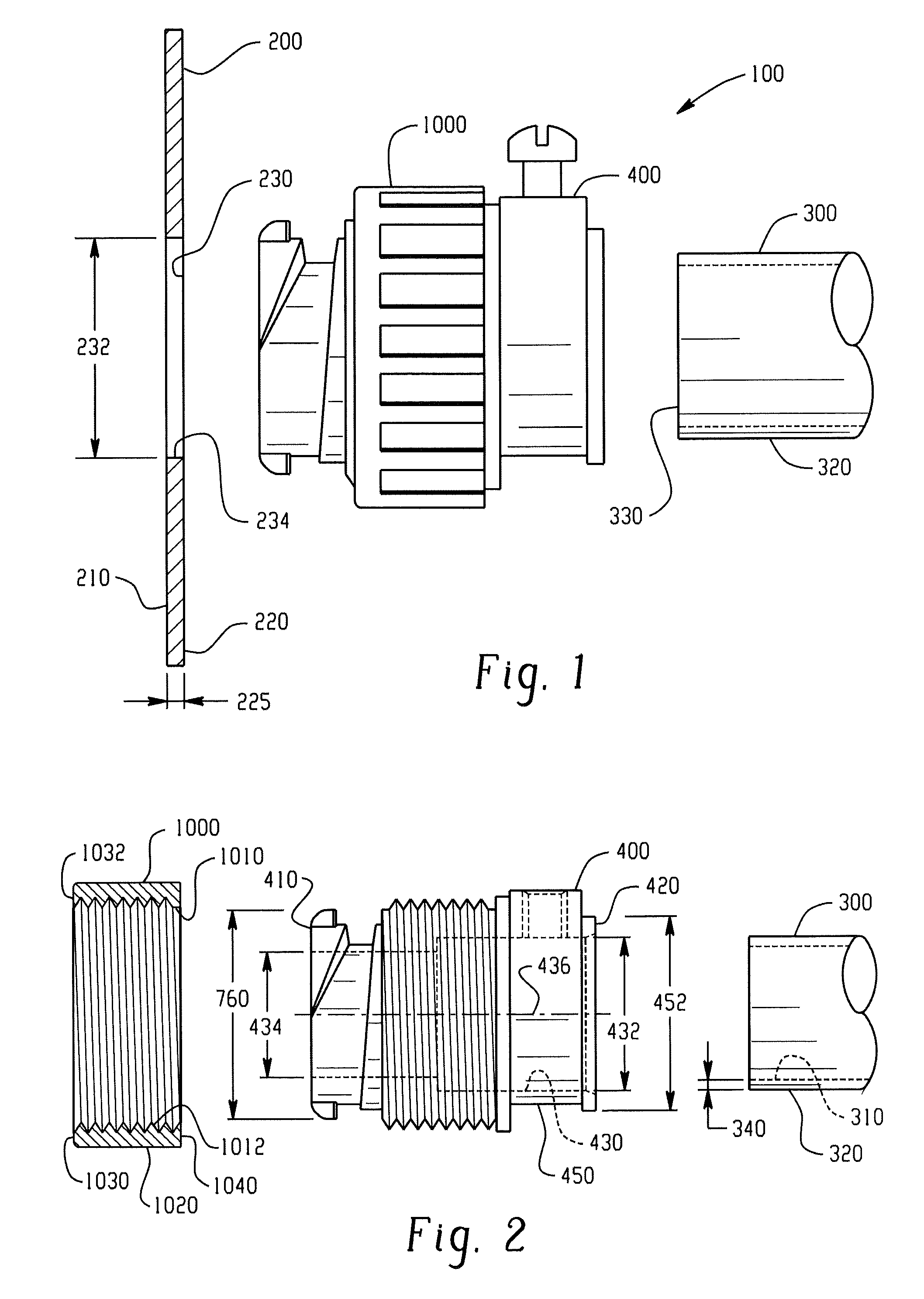Conduit connector
a technology of conduit connectors and connectors, which is applied in the direction of coupling device connections, manufacturing tools, engagement/disengagement of coupling parts, etc., can solve the problems of increasing the cost of installing electrical systems, increasing the cost of electrical systems, and expensive installation of electrical systems
- Summary
- Abstract
- Description
- Claims
- Application Information
AI Technical Summary
Problems solved by technology
Method used
Image
Examples
Embodiment Construction
[0037]A conduit connector is designed to quickly, safely, and rigidly connect to a junction box to facilitate the connection of a conduit to cables (and other electrical conductors) and to a wide variety of boxes (e.g., junction boxes, and so forth). Therefore, as used in this specification, the term conduit is not limited to standard rigid electrical conduit, but shall be intended to mean any type of conduit, any type of cable, or any other type of electrical conductor. The junction box is intended to include many types of electrical enclosures, such as, outlet and fixture boxes, enclosures for disconnect switches and motor starters, and transformer enclosures. The junction box can be made from steel, plastic, or other commercially feasible and acceptable materials.
[0038]Referring to FIG. 1, the junction box (200) has a box interior surface (210), a box exterior surface (220), and a box thickness (225). Typically, the junction box (200) has a plurality of prefabricated holes or ope...
PUM
| Property | Measurement | Unit |
|---|---|---|
| flank angle | aaaaa | aaaaa |
| flank angle | aaaaa | aaaaa |
| flank angle | aaaaa | aaaaa |
Abstract
Description
Claims
Application Information
 Login to View More
Login to View More - R&D
- Intellectual Property
- Life Sciences
- Materials
- Tech Scout
- Unparalleled Data Quality
- Higher Quality Content
- 60% Fewer Hallucinations
Browse by: Latest US Patents, China's latest patents, Technical Efficacy Thesaurus, Application Domain, Technology Topic, Popular Technical Reports.
© 2025 PatSnap. All rights reserved.Legal|Privacy policy|Modern Slavery Act Transparency Statement|Sitemap|About US| Contact US: help@patsnap.com



